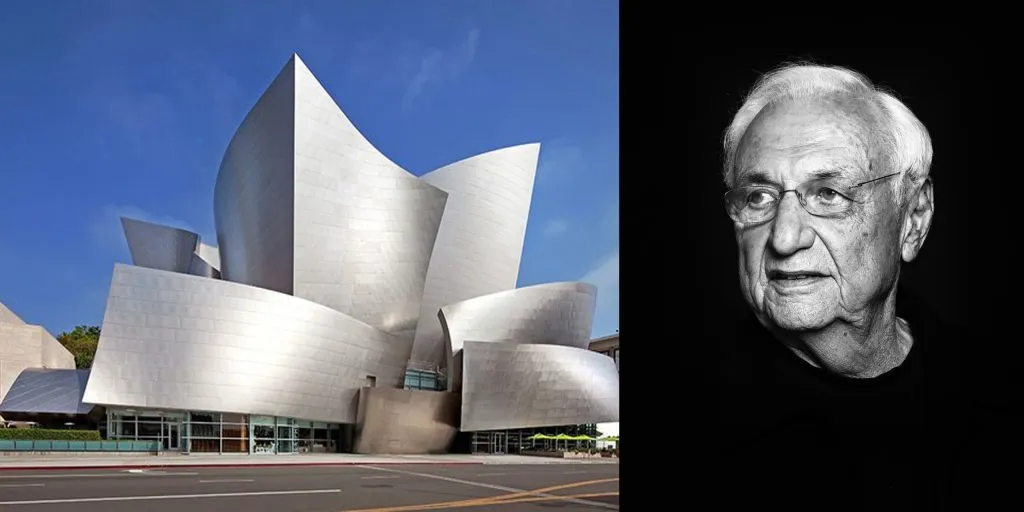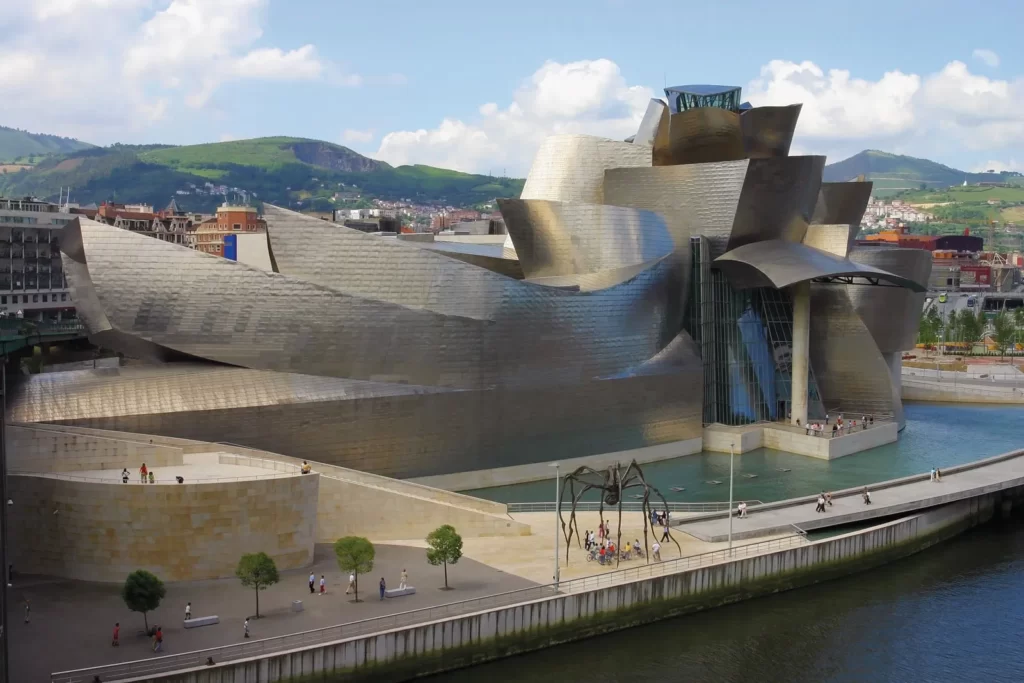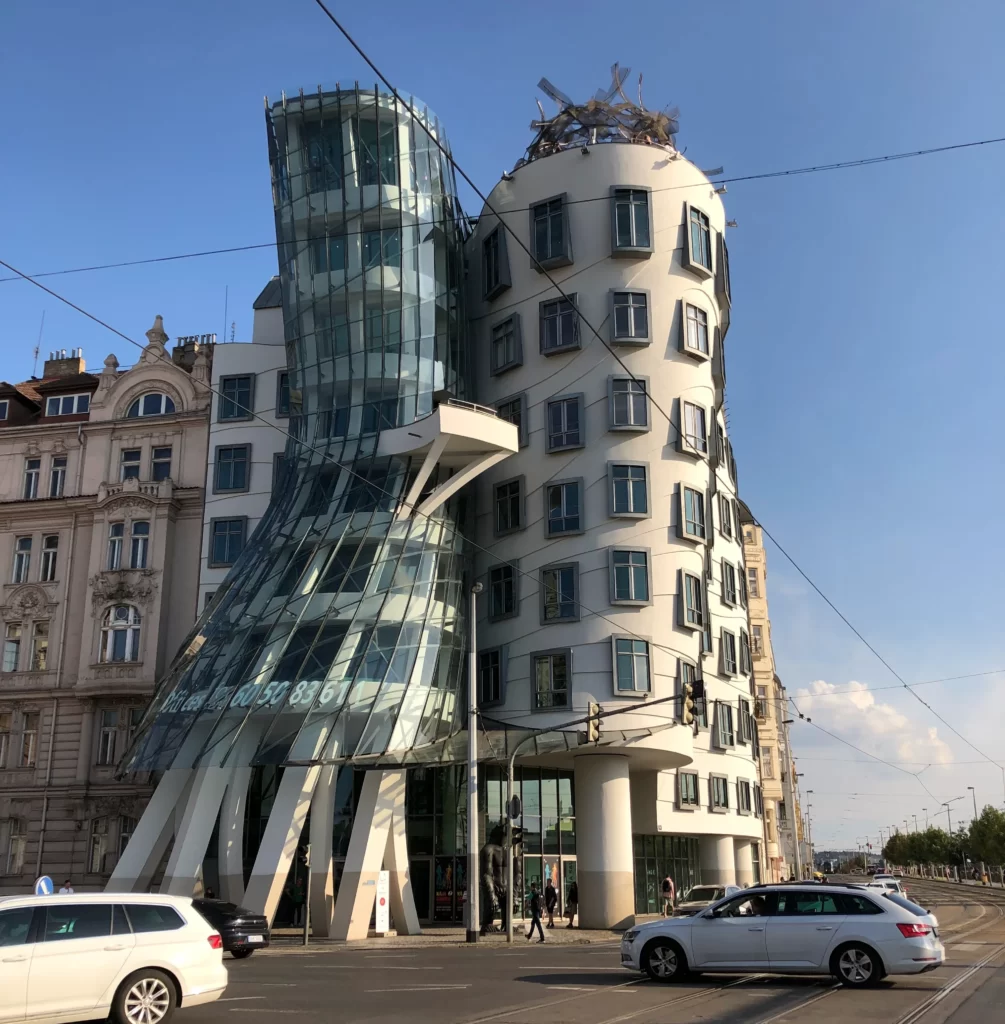If you want to know about the staircase design or landscape garden or requirements for disabled persons in a building, please click the link.
Introduction
Frank Gehry is a renowned Canadian-American architect known for his innovative and unconventional designs that challenge traditional architecture. He was born in Toronto, Canada, in 1929 and later moved to Los Angeles, where he established his architectural practice.

Gehry’s work has had a significant impact on the architecture industry. His designs have pushed boundaries, revolutionizing the field and inspiring new generations of architects. His buildings are not only visually stunning, but they also embody complex structural engineering and construction techniques.
1) Early Life and Education
Childhood and family background Frank Gehry was born as Frank Owen Goldberg on February 28, 1929, in Toronto, Canada, to Jewish immigrant parents. His father, Irving Goldberg, was a Polish immigrant who changed his name to Gehry when he moved to Canada. Gehry’s mother, Sadie Thaler, was a Jewish immigrant from Odessa, Ukraine. Gehry grew up in a low-income neighborhood in Toronto, where he developed a love for art and music at an early age.
Education and training Gehry studied architecture at the University of Southern California and graduated with a degree in architecture in 1954. After graduation, he worked for several firms, including Victor Gruen Associates and Pereira and Luckman, before starting his architectural practice in 1962. He also studied city planning at the Harvard Graduate School of Design.
Influential figures during his formative years During his formative years, Gehry was influenced by several architects and artists, including Frank Lloyd Wright, who Gehry met during a visit to Taliesin West in Arizona. He was also inspired by the work of Le Corbusier and the Deconstructivist movement. In addition to architects, Gehry was influenced by artists such as Claes Oldenburg and Robert Rauschenberg, who were known for their unconventional and playful approach to art.
2) Career and Major Works
First architectural projects
In the early years of his career, Gehry designed several residential buildings and commercial spaces, including the Rouse Company headquarters in Maryland and the Santa Monica Place Mall. He also designed a series of cardboard furniture pieces that were exhibited at the Museum of Modern Art in New York City.

Guggenheim Museum Bilbao
The Guggenheim Museum Bilbao in Spain is arguably Gehry’s most famous and iconic work. The museum, which opened in 1997, features Gehry’s signature style of curving, metallic forms that seem to defy gravity. The building has been credited with revitalizing the city of Bilbao and attracting millions of visitors.

Walt Disney Concert Hall
The Walt Disney Concert Hall in Los Angeles, California, is another one of Gehry’s notable works. Completed in 2003, the concert hall features Gehry’s characteristic undulating forms and is known for its acoustics and stunning design.

Dancing House in Prague
The Dancing House, also known as Fred and Ginger, is a building in Prague, Czech Republic, designed by Gehry and Vlado Milunić. The building, completed in 1996, is known for its unusual design, which features two towers that curve and twist to resemble a dancing couple.

Other notable projects
Gehry has designed numerous other notable projects throughout his career, including the Stata Center at the Massachusetts Institute of Technology, the Experience Music Project in Seattle, and the Louis Vuitton Foundation in Paris. He has also designed several private residences, such as the Schnabel House in Los Angeles and the Gehry Residence in Santa Monica.


Overall, Gehry’s work is characterized by his use of unconventional materials, his signature curving forms, and his ability to push the boundaries of traditional architecture. His buildings are not only visually striking but also functional, with complex structural engineering and construction techniques that challenge the norms of the industry.
3) Architectural Style and Approach
Deconstructivism
Gehry is often associated with the Deconstructivist movement in architecture, which seeks to challenge traditional notions of order and symmetry in design. His buildings often feature complex, fragmented forms that appear to be in a state of constant flux.
The use of unconventional materials
Gehry is known for his innovative use of materials in his buildings, such as titanium, steel, and glass. He has also used more unconventional materials, such as chain-link fencing and cardboard, in some of his earlier works. Gehry’s use of these materials has helped to create buildings that are not only visually stunning but also durable and functional.
Gehry’s design philosophy
Gehry’s design philosophy is centered around the idea of creating buildings that respond to their context and engage with the surrounding environment. He believes that architecture should be both functional and aesthetically pleasing, and that the two are not mutually exclusive. Gehry’s designs often incorporate elements of the surrounding landscape or culture, creating buildings that are uniquely tailored to their location.
Criticisms of Gehry’s work
Despite his many achievements, Gehry’s work has also faced criticism from some quarters. Some critics argue that his buildings are too focused on form over function, with impractical shapes that can be difficult to use or inhabit. Others have criticized his use of unconventional materials as being unsustainable or environmentally unfriendly. Nonetheless, Gehry’s impact on the architecture industry cannot be denied, and his work continues to inspire and influence architects around the world.
4) Achievements and Awards
Awards and honors
Gehry has received numerous awards and honors throughout his career, including the Pritzker Architecture Prize, the National Medal of Arts, and the AIA Gold Medal, among others. He has also been awarded honorary degrees from several universities around the world.
Impact on the architecture industry
Gehry’s impact on the architecture industry cannot be overstated. His innovative use of materials and his unique design philosophy have inspired a new generation of architects to think outside the box and push the boundaries of traditional architecture. His buildings have become iconic landmarks in cities around the world and have helped to redefine what is possible in architectural design.
Gehry’s contribution to society
Gehry’s contribution to society goes beyond his impressive portfolio of buildings. He is a passionate advocate for the arts and has been involved in numerous philanthropic initiatives throughout his career. He has also been a strong voice in the fight against homelessness and has used his platform to raise awareness about this important issue.
Overall, Frank Gehry’s legacy is one of innovation, creativity, and a commitment to pushing the boundaries of traditional architecture. His impact on the industry will continue to be felt for years to come, and his buildings will continue to inspire and delight people around the world.
5) Legacy and Influence
Gehry’s impact on contemporary architecture
Gehry’s impact on contemporary architecture has been significant, and his influence can be seen in the work of many younger architects who have been inspired by his unique style and approach. His buildings continue to push the boundaries of what is possible in architectural design, and his innovative use of materials and forms has become a hallmark of contemporary architecture.
Gehry’s influence on younger architects
Gehry’s influence on younger architects cannot be overstated. His innovative approach to design has inspired a new generation of architects to think outside the box and to embrace new technologies and materials. Many of the younger architects who have been influenced by Gehry’s work have gone on to create their own groundbreaking designs, further pushing the boundaries of contemporary architecture.
The continued relevance of Gehry’s work
Despite being in his 90s, Gehry continues to be active in the architecture industry and to push the boundaries of what is possible in architectural design. His work remains relevant and continues to inspire architects around the world. In an age where sustainability and environmental concerns are at the forefront of architectural design, Gehry’s innovative use of materials and his emphasis on creating buildings that respond to their context and engage with the surrounding environment remain as relevant as ever.
Overall, Gehry’s impact on contemporary architecture has been significant, and his influence will continue to be felt for years to come. His work remains relevant and continues to inspire architects to push the boundaries of what is possible in architectural design.
6) Conclusion
In conclusion, Frank Gehry’s life and career have been marked by innovation, creativity, and a commitment to pushing the boundaries of traditional architecture. Born in Canada in 1929, Gehry went on to become one of the most influential architects of his time, known for his unique style, his innovative use of materials, and his commitment to creating buildings that respond to their context and engage with the surrounding environment.
Gehry’s contributions to the architecture industry have been significant, and his impact on contemporary architecture cannot be overstated. His buildings have become iconic landmarks in cities around the world, and his innovative approach to design has inspired a new generation of architects to think outside the box and to embrace new technologies and materials. His legacy will continue to be felt for years to come.
We encourage readers to take the time to visit some of Gehry’s most iconic buildings or to learn more about his work. From the Guggenheim Museum Bilbao to the Walt Disney Concert Hall, Gehry’s buildings are not only visually stunning but also offer a unique perspective on the role of architecture in our society. By exploring his work, readers can gain a deeper appreciation for the power of architecture to shape our environment and to inspire us to think differently about the world around us.